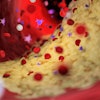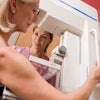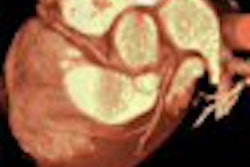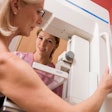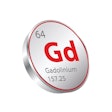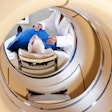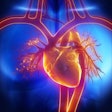
Somewhere over the rain and sleet of Salt Lake City, the sun rises today on the 2002 Winter Olympics. Huge murals cover downtown buildings; their giant athletes in suspended motion, as if poised to leap over the Wasatch Mountains to the east.
Real athletes, some 2,300 from 80 nations, battle for gold in 14 different sports. Tens of thousands of fans, too excited for mere television, have come to see the Games live. And in the single largest security event in American history, nearly 15,000 men and women defend the peace.
For hovering over these Olympics, just as surely as F-16 fighter jets and Black Hawk helicopters, are memories of tragedy. There is September 11, a day that has given rise to extraordinary efforts to protect a nation.
But ghosts of Olympics past also linger. An explosion during the 1996 Summer Games in Atlanta killed a woman and injured scores of bystanders at Olympic Centennial Park. The accused suspect, Eric Robert Rudolph, remains at large. In 1972, nine Israeli athletes were massacred in the melee that followed a hostage standoff at the Munich Games, when Palestinian gunmen invaded the Olympic Village.
Such incidents are, of course, extremely rare. The Olympic Games remain statistically safe, like air travel. But Americans are wary. According to an Associated Press poll in late January, a third of respondents believed that a terrorist attack is likely during the Games. An NBC-Wall Street Journal poll released the same day found that 44% considered a new terrorist attack "very likely" within the next few months.
In a visit to Utah last week, even U.S. Attorney General John Ashcroft was unconvinced that security efforts would suffice. Ashcroft found several "blind spots" in security, the New York Times reported. As a result, officials requested and received a last-minute infusion of resources, including 90 more U.S. agents, to enhance the protection of public areas, restaurants, shopping areas, and suburbs.
Yet Utah's governor Mike Leavitt told reporters this week, "It's impossible to create the same level of security that we have inside venues everywhere else. You can't eliminate all the risk."
On Wednesday, CIA director George Tenet warned Congress that "high-profile events such as the Olympics" are just the kind of targets the terrorist organization al-Qaida is seeking to attack. But seeking is not doing, and most people are confident that peace will prevail. To begin with, the international nature of the event makes it a poor target; interference would be bad PR even by al-Qaida standards.And a fortune has been spent to keep the Games safe. Officials have gone so far as to say that Salt Lake City might just be the safest place in the world during the Games, that heaven and earth have been moved to ensure security.
Such wholesale excavations don't come cheap, but then, $319 million isn't pocket change. A mountain of mostly federal money and years of planning have given organizers vast human and technological resources to carry out their plan, most of which was devised long before September 11. The Games were deemed a U.S. national special security event back in August 1999; the plans were merely reexamined and revised in September, according to U.S. officials. Twenty-six cents of every federal dollar spent on the Games is for security.
What the money buys
The Department of Defense has deployed more than 5,000 uniformed military personnel, including reservists and the National Guard. The military is backing up local and federal agencies with logistics, communications, explosives detection, and aviation support, according to the White House.
The Federal Emergency Management Agency (FEMA) has placed several urban search-and-rescue teams in the area. Along with the hundreds of agents policing the region, the FBI is operating a mobile field laboratory capable of detecting and analyzing explosives, biological and chemical weapons, and radioactive materials. The Environmental Protection Agency's hazardous materials teams will provide hazardous materials support.
The Department of Health and Human Services will help the FBI coordinate crisis response in the event of a bioterror threat. In turn, the Bureau of Alcohol, Tobacco and Firearms is assisting the FBI with arson and explosives detection and investigation. Their expertise has already come in handy for items like the rusted 50-caliber sniper rifle someone found in the woods near a venue this week. Then there was the suspicious package someone left next to a downtown parking garage yesterday. The package was blown up, and the bundle of wires and fuses it contained was deemed a "hoax device," according to the Salt Lake Organizing Committee's Joint Information Center.
A safety nerve center
The Olympic Coordination Center near the State Capitol is the heart of the safety beast. A high-tech, 24-hour-a-day command post, the center features direct video hookups to surveillance aircraft, and to the FBI's strategic command center in Washington, DC.
"I dare say this is the best plan, the best coordination, the best organized of any Olympics the world has ever seen," U.S. homeland security director Tom Ridge told reporters in January. He added, however, "There is no guarantee the plan is fail-safe."
"We have more people in the area around Salt Lake City for the Olympics than we do in Afghanistan," said U.S. defense secretary Donald Rumsfeld.
During key events, F-16 fighter jets and Black Hawk helicopters from nearby Hill Air Force Base buzz the city, the F-16s continuously transmitting infrared images of the scene to the security command. The aircraft will enforce a three-mile commercial no-fly zone around each Olympic venue.
All flights are grounded during major events such as tonight's opening ceremonies at Rice-Eccles stadium, during which even Salt Lake City International Airport will be closed. For the next 25 days, noncommercial aircraft must land at "buffer airports," mostly out of state, to be searched before approaching the area. Student, business, agricultural, and recreational pilots -- even hot-air balloonists -- are forbidden to fly within 45 miles of the 20 venues, which together cover an area of 900 square miles.
On the ground, elite counter-assault teams populate the city. Sharpshooters are poised for action. Psychologists wander the streets attuned to shady looks and suspicious moves. Serious secret service agents in dark suits study the crowds. Mail, packages, and parcels are x-rayed and metal-detected. Bomb-sniffing dogs are having their day.
Concentric layers of "smart" fencing surround the Olympic Village on the University of Utah campus. Cutting or even climbing them sets off an alarm. Three rings of military and security personnel guard the Village perimeter.
The mountains are patrolled by more than 100 U.S. Forest Service rangers equipped with rifles, night-vision goggles, and, one hopes, thermal underwear. There are plans to protect the mail, the water supply, ventilation systems, hazardous material sites -- anything that might be a target for misdeeds.
Top personnel include special agent and karate expert Mark Camillo, who directs overall security on behalf of the U.S. Secret Service. The FBI is in charge of law enforcement. Robert Flowers directs the Utah Olympic Public Safety Command, the group coordinating the security efforts of 50 state and local public safety agencies.
The Secret Service got high marks for pulling off Sunday's Super Bowl game in New Orleans without a ripple -- and with surprisingly little inconvenience for spectators. But already athletes in Salt Lake City have complained that the security checks cut down on their practice time.
The public is asked to bundle up and be patient. People are walking or taking shuttle buses from vast parking lots to venues more than a mile away, their belongings subject to search anytime, anywhere, or scanned for radiation, biohazards, metal objects. Seemingly ordinary items -- food, drinks, cans, bottles, coolers, audio and video recorders -- are prohibited at the venues, so one supposes the bags will be easy to search. And small.
"To avoid lengthy delays at security points where bag searches will be conducted, the maximum recommended size of any bag is 10" x 12" x 6," the official Olympics Web site advises tersely.
Technology's place at the table
On the cyberfront, the Salt Lake City Olympic computer system is secured by firewalls and virus detection applications, Wired.com reports. The network, which includes 4,500 PCs and 550 servers, is also protected by an intrusion-detection system that will alert the security team to any anomalous traffic or hack attacks.
At the airport, a comprehensive new plan is in place to ensure safe passage to and from the region, said Barbara Gann, public relations director for the Salt Lake City International Airport.
The outlook for baggage screening has improved markedly. In early January the airport had only two CT-based baggage scanners from Newark, CA-based InVision Technologies, the market leader that has been struggling to meet soaring post-September 11 demand.
The airport was prepared to make do with what it had. But last-minute arrangements succeeded in bringing seven additional CTX 5500 DS machines to the airport, for a total of nine CTX scanners. That addition makes Salt Lake City one of the world's best-equipped in terms of CT screening capabilities.
According to Gann, even the new machines won't put the airport in a position to x-ray 100% of outbound luggage, a standard that will be mandatory beginning in 2010. But the current plan will more than satisfy the combined screening and bag-matching approach that became effective last month under the U.S. Aviation and Transportation Security Act, she said.
"The airport is (implementing) a four-component program," Gann told AuntMinnie.com. "It's the CTX machines, and we're introducing ETD, explosive trace detection devices. The other two components of the program include additional hand-searching, and more canine explosives detection teams."
The airport was also recently equipped with a biological x-ray scanner to reduce the potential of contaminated food products in incoming luggage. Larry Lewis, public information officer with the Utah Department of Agriculture and Food, said the principal targets are meat, which carries a risk of foot and mouth disease, and produce, which could introduce insect pests or plant diseases into the region.
The food scanner, model 100100V from Wiesbaden, Germany-based Heimann Systems Group, uses multi-energy x-rays and specialized software to calculate the atomic weight of objects in scanned luggage, according to Bret Bader, general manager of the company’s U.S. subsidiary.
"It relies on the shape of the object, the density of the object, the darkness of the shading," Bader told AuntMinnie.com. "By calculating the atomic weight of the item, it can determine whether it's inorganic, organic, or mixed."
The classification is based on the atomic numbers Z, he said, with continuous color-scale results displayed on a monitor. Organic materials, low in atomic weight, come up orange; mixed items, green. Inorganic items, highest in atomic weight, are blue. The technology, developed in the late 1980s for the food processing industry, is becoming the standard in security applications, Bader said.
Other imaging technologies
Olympic officials do not comment on specific security preparations or technologies. However, other sources have provided unconfirmed information about imaging-related devices in use during the Games.
Among them, a Dynavision 400A x-ray device manufactured by Control Screening of Fairfield, NJ, will be used to screen mail and parcels at the Games. A conveyor belt carries mail through the device, which combines an integrated high-frequency detector with a 12-bit analog-to-digital converter, 50-MHz digital signal processing, and a full range of image enhancement controls.
PC-based x-ray inspection systems by Israel-based Vidisco Ltd. (foXrayII), powered by x-ray generators from Centerville, IN-based Golden Engineering, will x-ray packages, bags, and suspect objects.
Golden's battery-operated XR-150 pulse x-ray device can output image data to a laptop computer for 3-D viewing, or to a Polaroid film system, said company president Roger Golden. The XR-150 weighs in at just 4.5 lbs., making it far more portable than the 23-lb. device the company introduced some 30 years ago.
Finally, Garland, TX-based Garrett Metal Detectors is the official supplier of magnetometers for the Games, an Olympics spokesperson said.
By Eric BarnesAuntMinnie.com staff writer
February 8, 2001
Related Reading
Imaging technology answers an urgent call for security, October 26, 2001
Copyright © 2002 AuntMinnie.com

